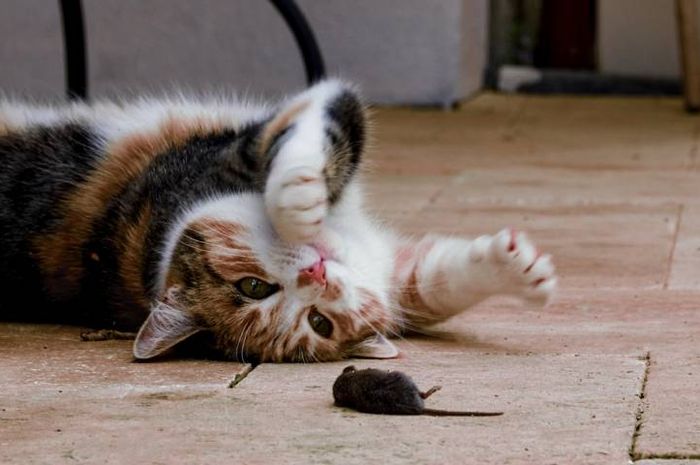For loverscat, definitely know the habits of this one cat. Whenpredatory instinctThe cat appears, then the cat will catch a bird, a small mouse or a lizard, the cat will play with it for a few minutes.
After the cat is satisfied, or until the prey doesn’t move anymore, then the cat puts it in front of the door or even gives it to you.
For cat owners, this behavior is the behavior of fur kittens – their adorable cat’s affectionate nickname. But for many conservationists, it’s an invasive killing machine action with four legs full of blades.
This difference in perception has sparked a heated debate between conservationists and cat lover about whether cats can be allowed out of the house.
But why do domestic cats chase and play with their prey even after they are dead? Are they adorable pets or furry serial killers? The truth lies somewhere in between.
To answer this question, we need to look at cat domestication. Wild catThe first to be domesticated probably around 8,000 years ago in Egypt and the surrounding region, according to a 2017 study published in the journal Nature Ecology and Evolution.
These cats are members of the species Felis silvestris lybica, also known as the African wildcat. They are attracted to the city by the rats they hunt for food.
Humans, in turn, keep these cats because they control populations of disease-spreading and grain-eating rodents. In certain societies, such as ancient Egypt and China, these feline companions were considered lucky or even respected.
But, even though we’ve lived with our feline friends for thousands of years, “the domestication of ‘true’ cats can be traced back to about 200 years ago,” Martina Cecchetti, a conservation scientist who studies cat behavior at the University of Exeter in the UK, told Live Science.
In this context, Cecchetti explains, “true” domestication means selectively and deliberately bred by humans, not simply living together with our species.
Because they were recently tamed, cats retain many of the instincts passed down from their wild ancestors. They hunt small prey throughout the day, according to a 2006 study in The Journal of Nutrition.
This evolutionary remnant encourages a cat “to catch prey even if it’s not hungry,” Cecchetti said.
What’s more, cat play instincts, such as hitting, pouncing, and clawing with claws, stem from hunting behavior. Feral cats often play with their prey to tire it out before eating it, which reduces the risk of injury to the cat.
Thanks to this instinct, even modern domestic cat breeds can survive relatively easily in the wild. Some Polish populations have been so successful, they are now considered invasive pests.
Studies show that domestic cats allowed to roam outside can cause serious environmental disturbances. A 2013 study in the journal Nature Communications estimated that cats kill more than 1.3 billion birds and 6.3 billion small mammals each year in the United States alone.
So how can people stop their furry friends from causing so much ecological damage? Cecchetti’s research shows that some pet cats’ urges to hunt can be stymied by giving them sufficient playtime at home.
Then, feed them a high-quality, meat-rich diet that provides the right balance of micronutrients.
“Domestic cats are obligate carnivores,” Cecchetti says, so if they don’t get enough meat at home, they may look elsewhere.
If you choose to provide food for feral cats, the Humane Society recommends using a trap-neuter-return (or TNR) program. These programs temporarily catch stray cats and spay or neuter them, vaccinating them against rabies.
Then they identify the cats by ear tips and return them to the area where they were found if local shelters cannot accommodate them.
This process helps control the feral cat population, which in turn can reduce the number of feral creatures they kill.
But perhaps the best way to ensure that your feline friends don’t run amok in your local ecosystem is to keep them indoors. With lots of toys and at least 20 square feet of space, or 1.8 square meters.
And if you leave the house, take it with a rope. That way, he can unleash his hunting instincts to his heart’s content, without sacrificing the wildlife around him.
